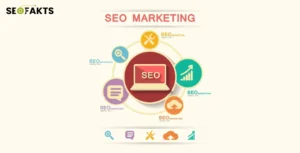Writing engaging blog posts is more than just stringing words together. It’s about crafting content that resonates with your audience, holds their attention, and inspires them to return for more. In this detailed guide, we’ll explore strategies and techniques to create compelling blog posts that keep readers coming back.
1. Know Your Audience
The foundation of any successful blog post is understanding your audience. Before you start writing, take the time to research and understand who your readers are. What are their interests, pain points, and preferences? Creating detailed reader personas can help you tailor your content to meet their needs and expectations. The more you know about your audience, the more you can personalize your content to resonate with them.
Action Steps:
- Conduct surveys or interviews to gather insights into your audience’s needs and preferences.
- Analyze your existing audience data, such as demographics, behavior, and engagement metrics.
- Create reader personas that represent different segments of your audience.
2. Craft a Compelling Headline
Your headline is the first thing readers see, and it plays a crucial role in determining whether they click on your post. A compelling headline should be attention-grabbing, concise, and promise value. Use power words, numbers, and questions to pique curiosity. However, make sure your headline accurately reflects the content of your post to avoid misleading your readers.
Action Steps:
- Use headline analyzers to test the effectiveness of your headlines.
- Experiment with different headline formulas, such as “How-To,” “Listicles,” and “Question-Based” headlines.
- Keep your headlines under 70 characters to ensure they are fully visible in search results.
Related blog Unlocking the Secrets of Effective SEO: What You Need to Know
3. Create a Strong Introduction
Once you’ve grabbed your reader’s attention with a great headline, your introduction needs to reel them in. Start with a hook that engages the reader right away, such as an interesting fact, a provocative question, or a compelling anecdote. Clearly state what the post is about and what the reader will gain by continuing to read.
Action Steps:
- Write multiple versions of your introduction and choose the one that best captures the reader’s attention.
- Use storytelling techniques to make your introduction more relatable and engaging.
- Clearly outline the purpose of your post and what readers can expect to learn or take away.
4. Use Subheadings and Formatting for Readability
A well-structured blog post with clear subheadings, bullet points, and short paragraphs makes it easier for readers to scan and digest information. Subheadings break up your content into manageable sections and guide readers through your post. Use bullet points and numbered lists to highlight key points and make your content more reader-friendly.
Action Steps:
- Break up long paragraphs into shorter ones for better readability.
- Use subheadings to create a logical flow and make your content easy to navigate.
- Highlight important information with bold or italicized text.
5. Incorporate Visuals
Visual content can significantly enhance the engagement level of your blog posts. Images, infographics, videos, and charts can help explain complex concepts, provide visual breaks, and make your content more appealing. Make sure to use high-quality visuals that are relevant to your content and add value to your readers.
Action Steps:
- Use a mix of visuals to complement your text and provide a more dynamic reading experience.
- Include alt text for images to improve accessibility and SEO.
- Optimize visuals for faster loading times without compromising quality.
6. Write in a Conversational Tone
Writing in a conversational tone makes your content more relatable and easier to read. Use simple language, avoid jargon, and write as if you’re speaking directly to your reader. This approach helps create a connection with your audience and keeps them engaged throughout the post.
Action Steps:
- Use “you” and “your” to speak directly to your readers.
- Avoid overly formal language and write in a natural, friendly tone.
- Read your post out loud to ensure it sounds conversational and flows well.
7. Tell Stories
Humans are naturally drawn to stories. Incorporating storytelling into your blog posts can make your content more engaging and memorable. Use personal anecdotes, case studies, or fictional scenarios to illustrate your points and keep readers hooked.
Action Steps:
- Start your post with a compelling story that relates to your topic.
- Use storytelling to explain complex ideas or concepts in a more relatable way.
- Include quotes, testimonials, or real-life examples to add authenticity to your stories.
8. Provide Valuable and Actionable Content
Your readers are looking for content that provides real value and actionable insights. Ensure your blog posts are informative, well-researched, and provide practical advice that readers can implement. The more value you provide, the more likely readers are to return for more.
Action Steps:
- Conduct thorough research and back up your claims with credible sources.
- Offer actionable tips, step-by-step guides, or checklists that readers can use.
- Update your content regularly to keep it fresh and relevant.
9. Include a Strong Call-to-Action (CTA)
A strong call to action encourages readers to take the next step, whether it’s leaving a comment, sharing your post, or signing up for your newsletter. A well-placed CTA can help increase engagement and build a loyal reader base.
Action Steps:
- Place your CTA strategically within your post, such as at the end or after a key section.
- Use action-oriented language to encourage readers to take the desired action.
- Test different CTAs to see which ones resonate best with your audience.
10. Optimize for SEO
Search engine optimization (SEO) is crucial for driving traffic to your blog. By optimizing your content for relevant keywords, you can increase your chances of ranking higher in search engine results and attracting more readers. However, it’s important to write for your audience first and optimize for search engines second.
Action Steps:
- Conduct keyword research to identify relevant keywords and phrases for your topic.
- Use keywords naturally throughout your post, including in the headline, subheadings, and meta description.
- Optimize your images, URLs, and internal links for better SEO performance.
11. Engage with Your Readers
Engaging with your readers through comments, social media, and email can help build a strong community around your blog. Respond to comments promptly, encourage discussions, and show appreciation for your readers’ support.
Action Steps:
- Respond to comments on your blog and engage with readers on social media.
- Encourage readers to share their thoughts, experiences, or questions in the comments section.
- Build an email list and send regular updates, exclusive content, and personalized messages to your subscribers.
12. Analyze and Improve
Finally, continuously analyze your blog performance and make improvements based on the data. Use tools like Google Analytics to track metrics such as page views, bounce rate, and average session duration. Identify what’s working and what’s not, and adjust your strategy accordingly.
Action Steps:
- Monitor key metrics to understand how your blog posts are performing.
- A/B test different elements, such as headlines, CTAs, and content formats, to see what resonates best with your audience.
- Gather feedback from your readers and use it to improve your content and strategy.
Related blog Top 10 Web Design Trends for 2024 – What’s New and What’s Next
Conclusion
Writing engaging blog posts that keep readers coming back is an art that combines creativity, empathy, and strategy. By understanding your audience, crafting compelling content, and continuously improving your approach, you can build a loyal reader base and achieve long-term success with your blog. Remember, the key is to provide value, foster connections, and create content that resonates with your readers.





